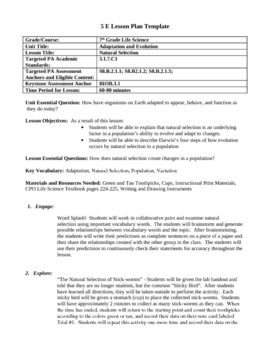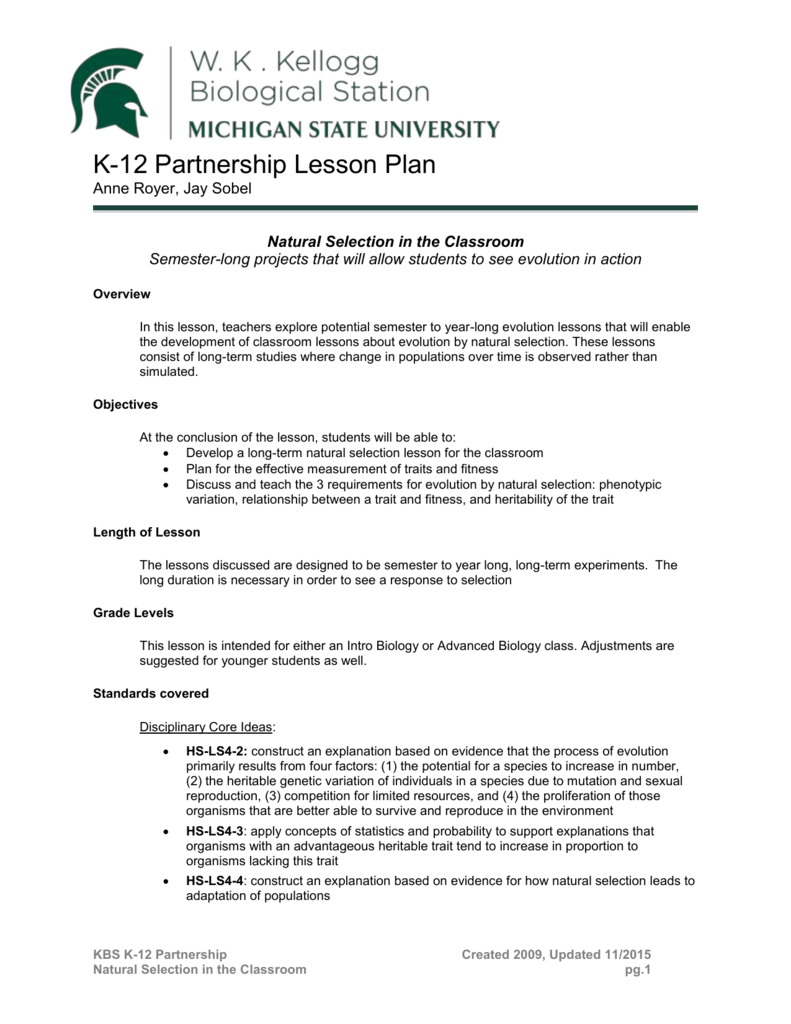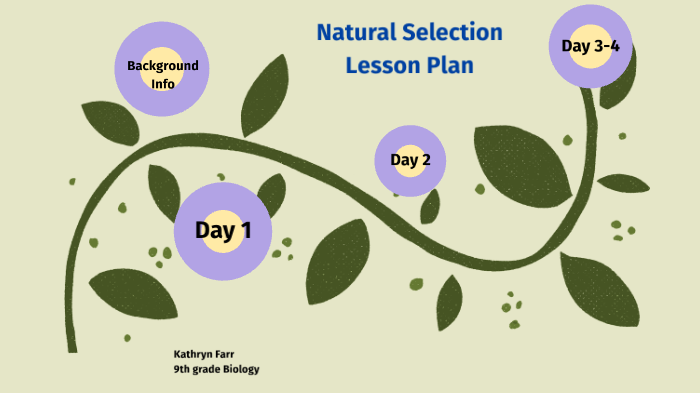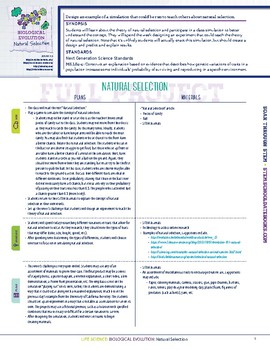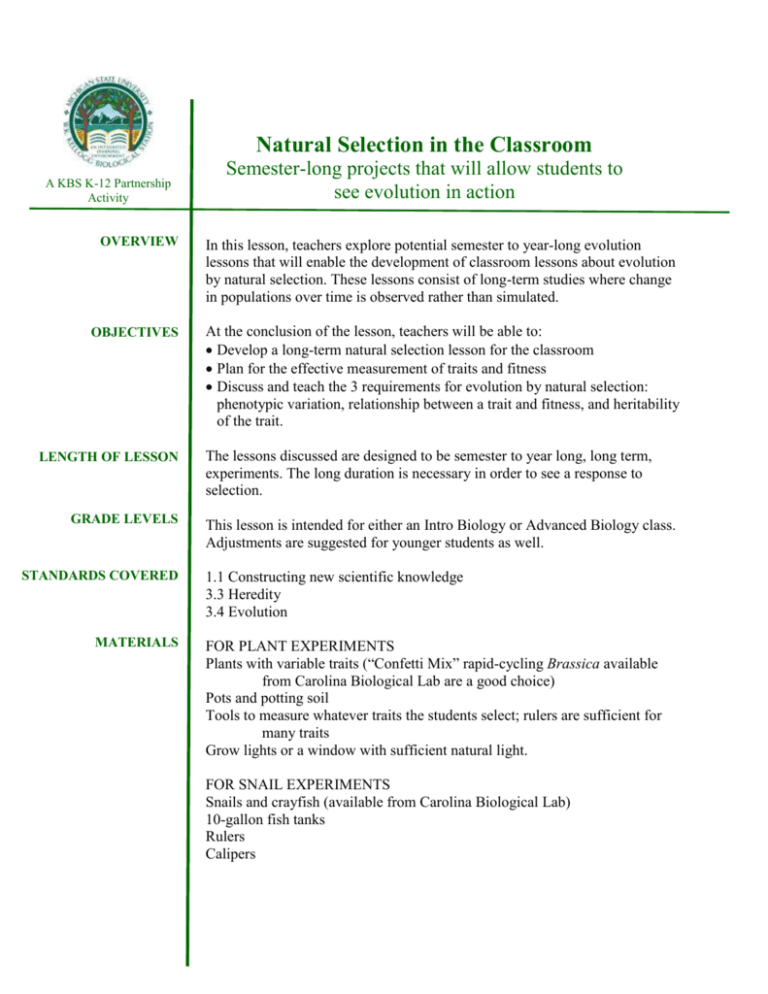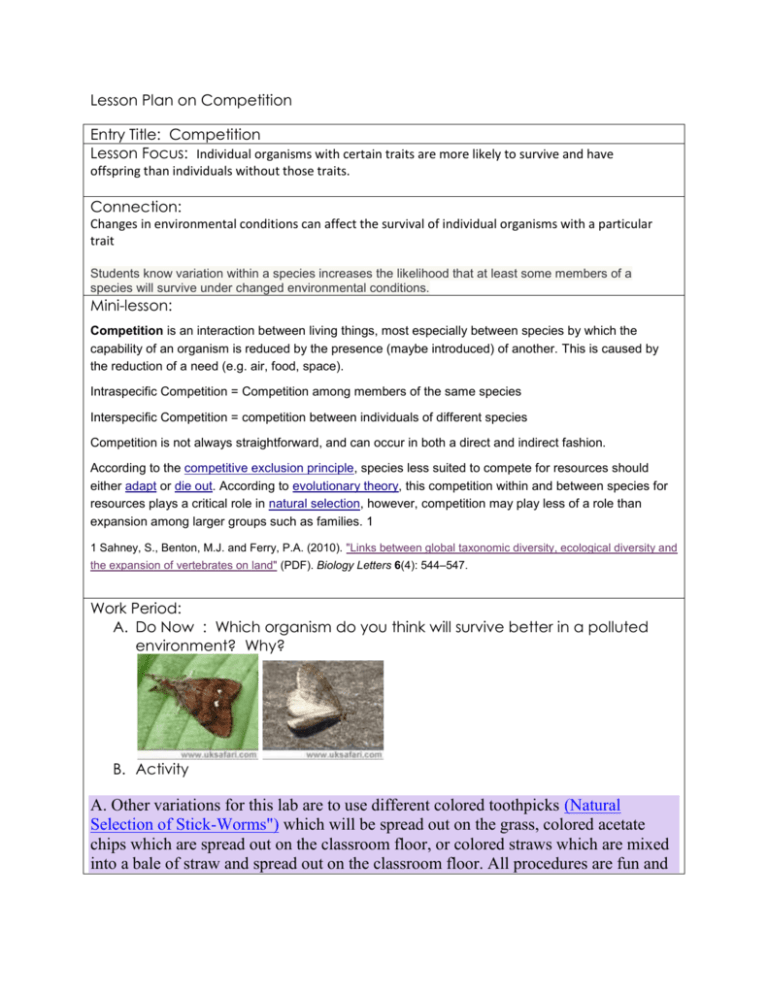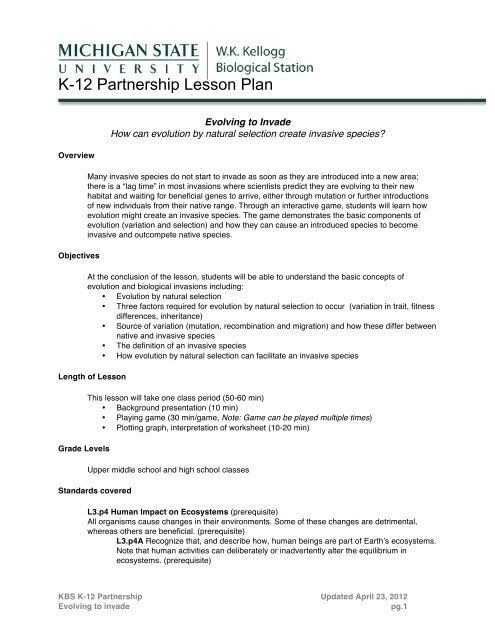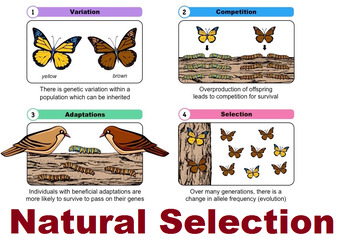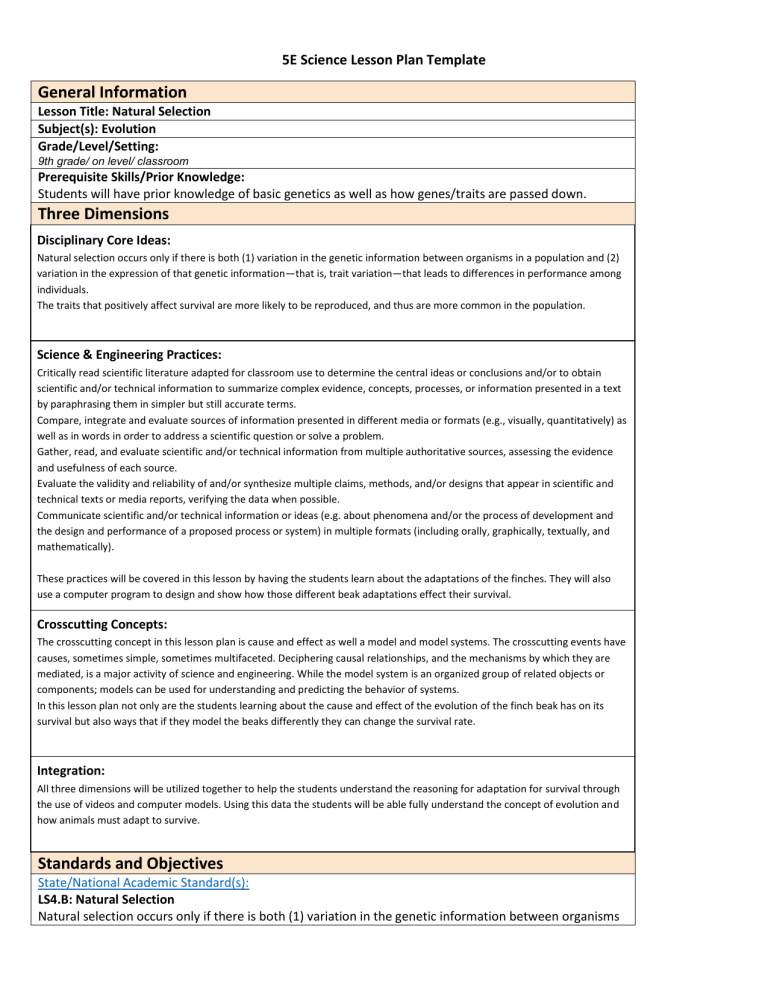Natural Selection Lesson Plan
Charles Darwin developed his theory of evolution by natural selection using four important observations.
Natural selection lesson plan. Question bank to build assessments. Discussion of current happenings involving the concepts of natural selection and evolution will illustrate the importance of Darwins. Students will analyze and interpret 3 models of natural selection and answer comprehension questions about each.
Count out 50 of each kind of seed and scatter them on the piece of carpet. Adaptation Test Question Bank. Biology Online Professional Development 5-E Updated Lesson Plan Natural Selection Lesson Title.
An active membership is required to view questions. Natural Selection Kelly Lamey Anna Wetherholt Learning Objectives Assessment Criteria Students will identify features of organisms for their adaptive competitive and survival potential Student answers will includebut are not limited to appendages reproductive rates camouflage and defensive structures. All organisms produce more offspring than survive to adulthood.
Your students will practice important science skills while. Time is precious to a teacher and these oven ready lessons include everything you need at a cost effective price. Lesson Plan on Evolution and Natural Selection Developed by Chantier 7 project team members Instructional goals.
When the minute is up tell your students to freeze and put their utensils down. Model 2 features a graph of the changes in frequency of. Lesson Plan Subjects Natural Selection Grade Level Middle High School Duration 60 min Rationale This inquiry-based learning activity on natural selection will help students establish a basic understanding of natural selection.
Students will read the natural selection reading and apply their Engage and Explore activities to what they have just learned. BrainPOP Topic Directory All Lessons Natural Selection Educator Resources for Natural Selection Find out how Darwin went to the Galapagos Islands and discovered how. The different kinds of seeds represent genetic variations or adaptations among the members of the population or different species of prey.
8 rows This lesson plan will enable the students to understand Darwins theory of natural. Free Lesson Plan PDF Lesson Plan DOCX Answer Key with Membership. Darwin and Natural Selection suitable for home teaching Quality Assured Category.
Understanding the Process of Natural Selection Lesson Objectives. The resources included are perfect for subject specialists and non-specialists. Within this sequence you will also find student worksheets that can be printed out and used by students.
EvolutionNatural selection - complete lesson KS3 The resources included here are designed to be stimulating challenging and adequately differentiated. With this worksheet students will explore one of the five mechanisms of evolution. Toothpick Fish Lesson Length.
Then have them to count the items of food in their cup and record the results on their worksheet. The seeds represent individuals of a prey population. In this educational resource page you will find lesson plans and teaching tips about Science learn about Darwin niches traits mutations evolution adaptations anthropology and STEM.
The purpose of this lesson is for students to understand that evolution a long process and is the result of a species need to adapt to survive in the environment it lives in. Explain Students create a claim and argument mini essay using the paragraph frames to explain how having a variety of traits in a population allows for natural selection and ultimate survival of the species. Natural Selection Lesson Plans.
Tell students to begin the simulation. Set a timer for one minute. Full Lesson Plan.
SWBAT demonstrate how the process of Natural selection results in changes in genotype. Model 1 shows the process of natural selection on a population of bacteria. 5E Lesson Planning Module 2.
Lesson Plans A detailed lesson sequence to teach Natural Selection to middle school aged children through fun activities and interactions. LESSON PLAN CONTINUED NATURAL SELECTION Student Activity 1 Continued Round 1 a.


